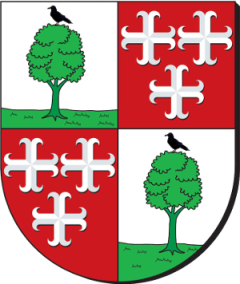In 2025, Museum Veere will be 75 years old. Which is why the Friends of Museum Veere Foundation has taken the initiative to have the often turbulent history of Museum Veere and its predecessors recorded. The board of the Friends of Museum Veere foundation has found historian Nicolette van Neste willing to research and write down the museum’s history to date. The result is a captivating, richly illustrated account of the museum’s ups and downs, complete with a bibliography and notes. The book has 112 pages.
Summary
Museum De Schotse Huizen (later Museum Veere) came into being in 1950. On 9 June that year, the museum was solemnly opened by the secretary-general of the Ministry of Education, Arts and Sciences, Mr H. J. Reinink. Numerous dignitaries had travelled to the small town for the occasion. The museum was the only state museum in the province of Zeeland.
That this small museum, operated by the Stichting de Schotse Huizen, was state property was because owner Alma Oakes of the Scottish house De Struys – she was also an art dealer and organiser of exhibitions of Veerse kunst and local dress before the war – bequeathed her house to the state in 1947 on the condition that it should always be operated as a museum.
It was not always easy to run the small museum, but it succeeded. Visitor numbers rose steadily, the exhibitions became more professional and the accommodation, the two magnificent 16th-century buildings built by Scottish merchants, gradually became a little more suitable for museum use.
Despite this, the museum’s survival hung by a thread in both the 1990s and the 10s of this century. Private enterprise and market forces were concepts that also permeated the museum world. The state wanted to divest national museums. Subsidies were withdrawn. The Scottish Houses Foundation was forced to go into liquidation in 1996. The people of Veerse rallied. The museum had to stay open. A Friends Foundation was set up and within weeks it had hundreds of members. Eventually, the Delta Cultureel Foundation, set up in 1975 to operate the Grote Kerk Veere as a cultural centre, succeeded in getting the museum up and running again.
In the 10s of this century, history threatened to repeat itself. Concepts like earning models, strategic choices, unique selling points and professionalisation battles flew across the table during brainstorming sessions. Eventually, with success. In 2016, museum De Schotse Huizen joined forces with town hall museum De Vierschaar, located in the magnificent 15th-century town hall, to form the revamped Museum Veere. Supported by a large group of enthusiastic volunteers, the museum still stands proud after seventy-five years and hopes to celebrate its anniversary, among other things, with the publication of this book.
This book records what happened in those 75 years, and in the period before that.
Remarkably, issues from then are also relevant today and in this way the book can contribute to solving today’s problems. In addition, the book gives a beautiful picture of how, in a small town like Veere, a museum housed in the region’s most beautiful monuments can continue to exist over the years despite financial and administrative problems.
The story is based on archival research, provided with notes and is engagingly written. It will certainly appeal to a somewhat wider audience.
About the author
Drs Nicolette van Neste (1954), studied history at Radboud University Nijmegen – formerly Catholic University Nijmegen. From 1983 to 2018, she taught history at Scheldemond College in Vlissingen. From 2017 to the present, she worked as a volunteer for Museum Veere. She put together several exhibitions including the exhibition “A Phenomenon in Veere; Hendrik Willem van Loon (1882-1944)”. To accompany this exhibition, she wrote an accompanying booklet with the same title.
Self-published
The book was printed by printers Van Keulen in Serooskerke and was self-published.
The Hurgronje Family Fund made a financial contribution to the realisation of this publication.

0 comments